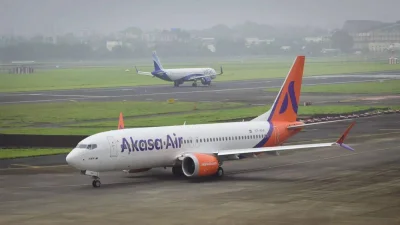Spirit Air files bankruptcy, bondholders set to take control


A Spirit Airlines plane at Terminal A of LaGuardia Airport in New York. The airline sought Chapter 11 protection in New York to restructure $1.6bn of debt, according to court filings.
The airline sought Chapter 11 protection in New York to restructure $1.6bn of debt, according to court filings. It said will continue to operate normally throughout the bankruptcy process, which should complete in the first quarter of 2025.
Spirit had been seeking to tie up with rivals amid competition from traditional carriers and higher inflation. It was forced to start restructuring talks with creditors after a federal judge blocked a $3.8bn acquisition by JetBlue Airways Corp, ruling the combination would harm cost-conscious travellers by driving up the price of airline tickets across the industry. Separate talks for a merger with Frontier Group Holdings Inc also fell apart in recent weeks, paving the way for the bankruptcy filing.
The discount carrier has reached a broad overhaul agreement with creditors holding about 80% of the debt to be restructured and has enough support to receive court approval, according to court documents.
Under the plan, which can be revised during the Chapter 11 process, existing bondholders will swap $795mn of their notes for equity, while shares will be de-listed. Holders of senior secured and convertible notes will receive $840mn of new secured notes. Bondholders also committed to inject $350mn of fresh equity and provide $300mn of debtor-in-possession financing to support Spirit throughout the Chapter 11 process.
The carrier said it has about $3.6bn in long term debt, including $136mn in unsecured term loans it owes the federal government as part of Covid-19 pandemic-era related support.
Spirit, which employs 12,800 people, has struggled following the Covid-19 pandemic as the largest US carriers stepped up use of basic economy fares to lure travellers away, while part of its fleet was grounded by an engine manufacturing defect. Most recently, fares were held down during the crucial summer travel period because airlines put too many seats into the domestic market.
The developments kept Spirit from the constant growth that’s needed to keep the discount model successful, offering rock-bottom fares but making money by charging for items such as coffee, bottled water, carry-on bags and printed boarding passes.
The company has posted annual losses since 2020 and its stock has plummeted 93% this year through November 15.
“The airline industry (particularly in the United States) is contending with shifting consumer demand and operational headwinds, such that it is unrecognisable from what it was pre-pandemic,” Fred Cromer, chief financial officer of Spirit, said in a court document. “Low-fare carriers — whose business models rely on much slimmer margins — are disproportionately affected.”
The discount carrier in recent months announced it would begin offering items like extra leg room and free checked bags in response to growing consumer demand for more upscale travel options. It also hired a “world recognised” advertising agency and a brand adviser to help shed its reputation as one of America’s most disliked airlines.
Spirit’s Chief Executive Ted Christie told customers in an e-mailed letter on Monday that they could continue to book and make flights on the carrier “now and in the future,” using all tickets, credits and loyalty points as normal.
“We expect to complete this process in the first quarter of 2025,” Christie said. “Other airlines that are operating successfully today have undertaken a similar process.”
Spirit follows into bankruptcy budget Brazilian airline Gol Linhas Aereas Inteligentes SA, which in January filed for Chapter 11 in New York.
The case is Spirit Airlines Inc, 24-11988, US Bankruptcy Court, Southern District of New York (Manhattan).



